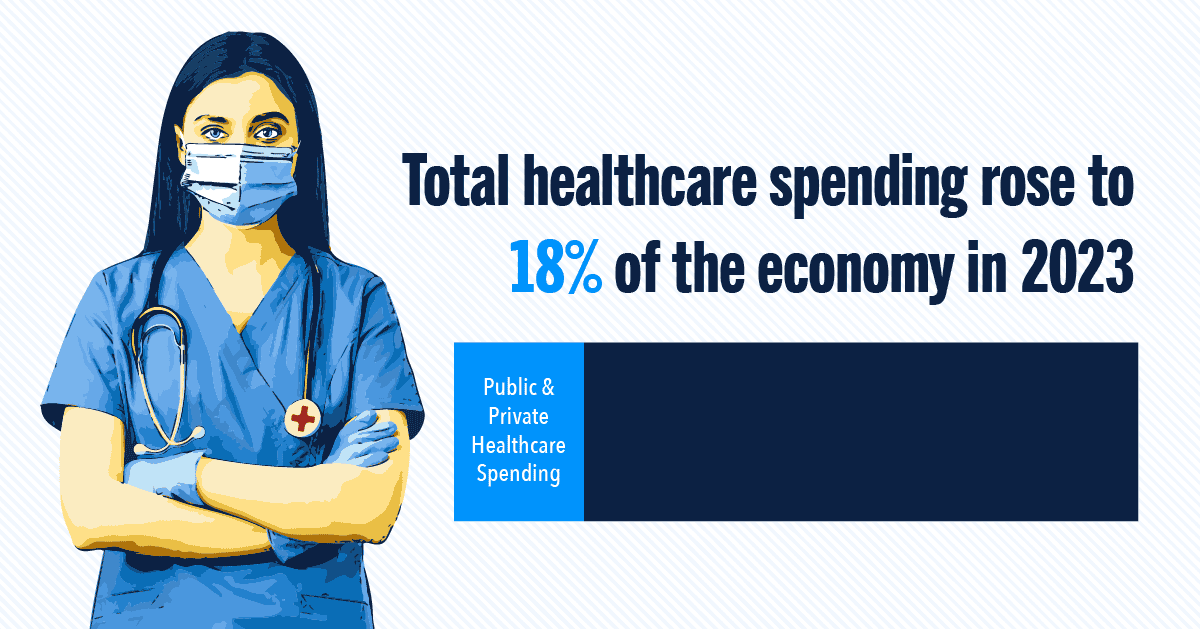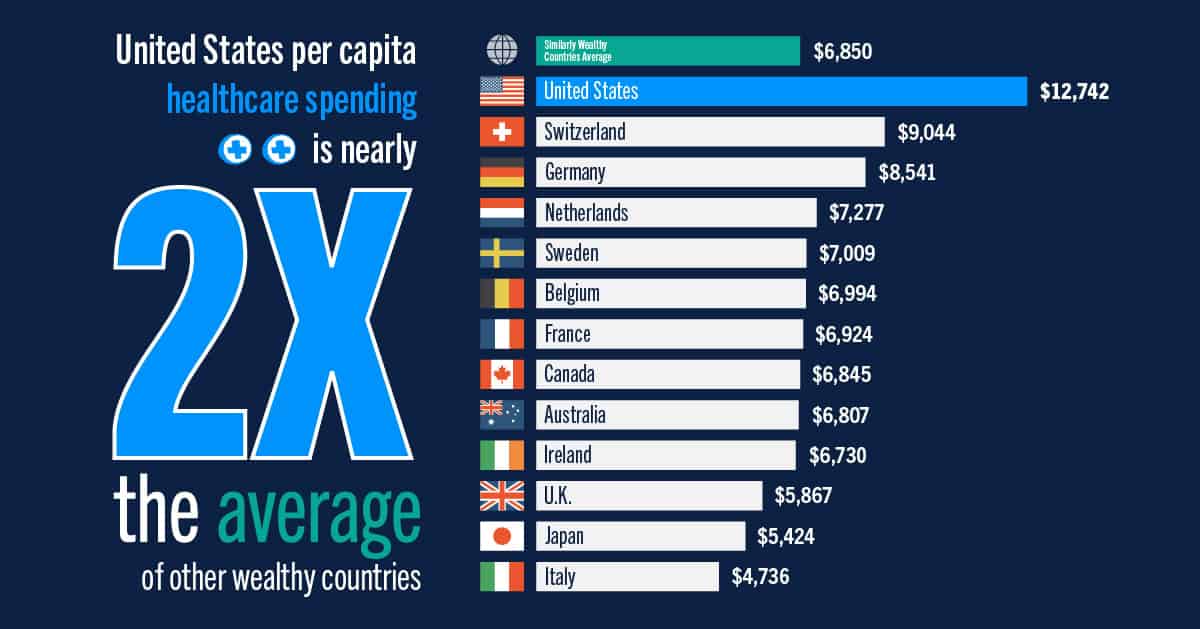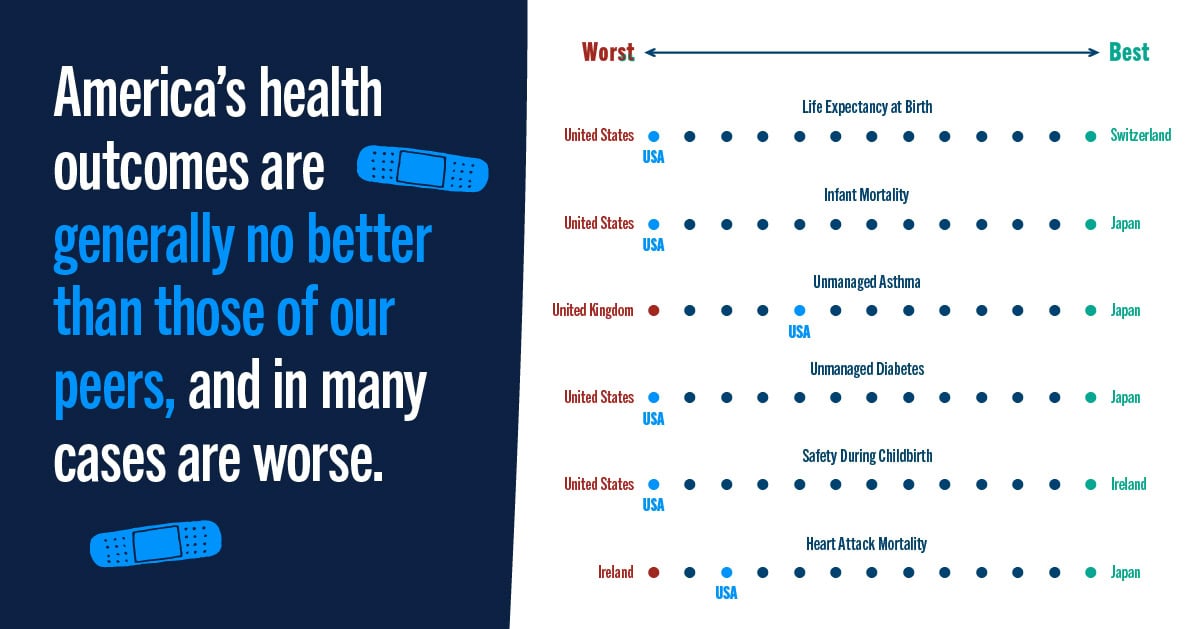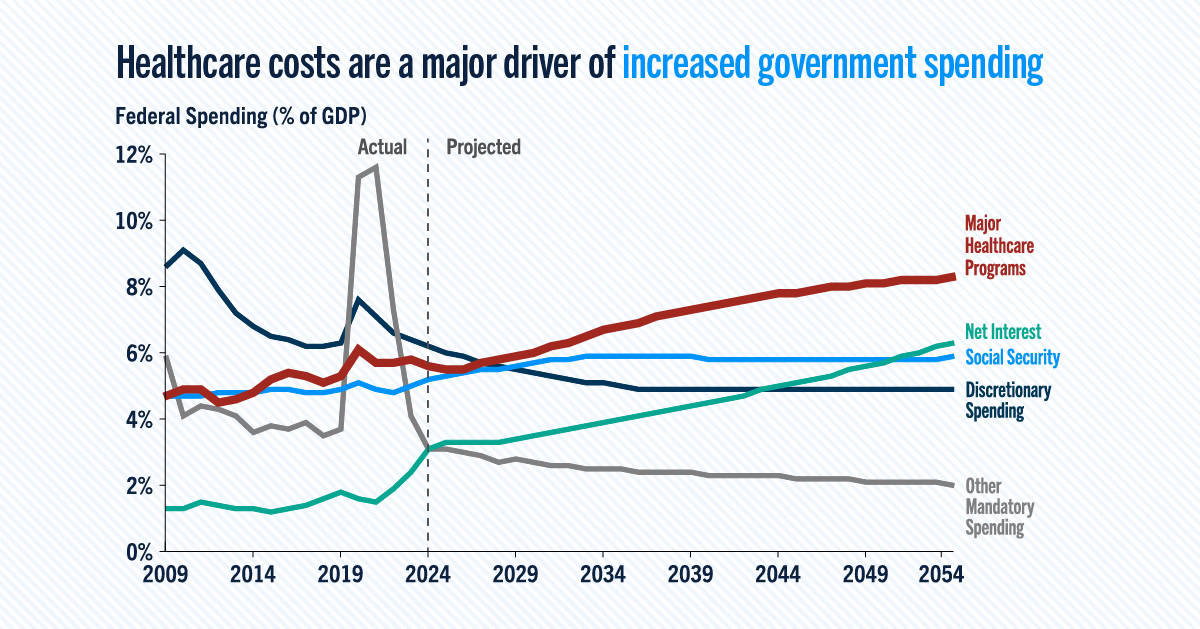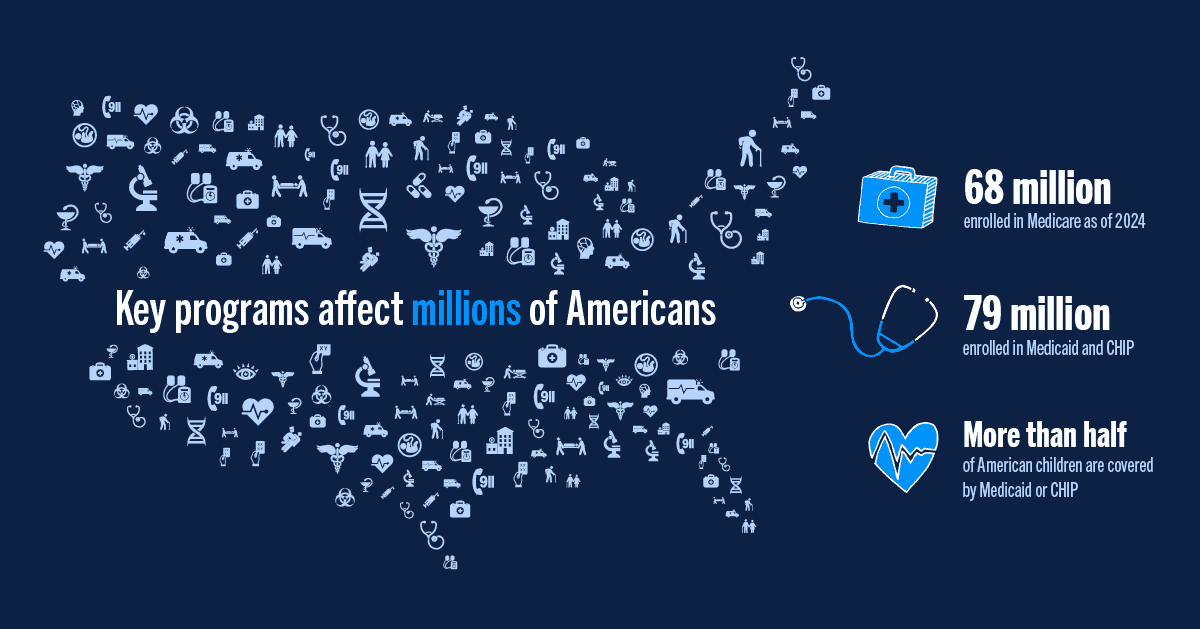Improving our healthcare system to deliver better quality care at lower cost is critically important to our nation’s long-term economic and fiscal well-being.
The rising cost of healthcare is one of the key drivers of our growing national debt, which crowds out important investments in our future economy, including priority areas like education, research and development, and infrastructure.
Although the United States spends significantly more per person on healthcare than other industrialized nations, our health outcomes are no better — and are often worse.
As lawmakers consider changes to healthcare reform, the infographic below highlights some key facts about the American healthcare system. To learn more about possible policy options, see our discussion of healthcare solutions or visit the Peterson Center on Healthcare.

Feel free to share this infographic on Twitter.
Further Reading
How Do States Pay for Medicaid?
Medicaid’s role in state budgets is unique, since the program acts as both an expenditure and the largest source of federal support in state budgets.
How Does Government Healthcare Spending Differ From Private Insurance?
Government insurance programs, such as Medicare and Medicaid, made up 45 percent, or $1.9 trillion, of national healthcare spending.
7 Key Facts About Rising Healthcare Spending in the U.S.
Healthcare spending in the United States is a key driver of the nation’s fiscal imbalance and has risen notably over the past few decades.
